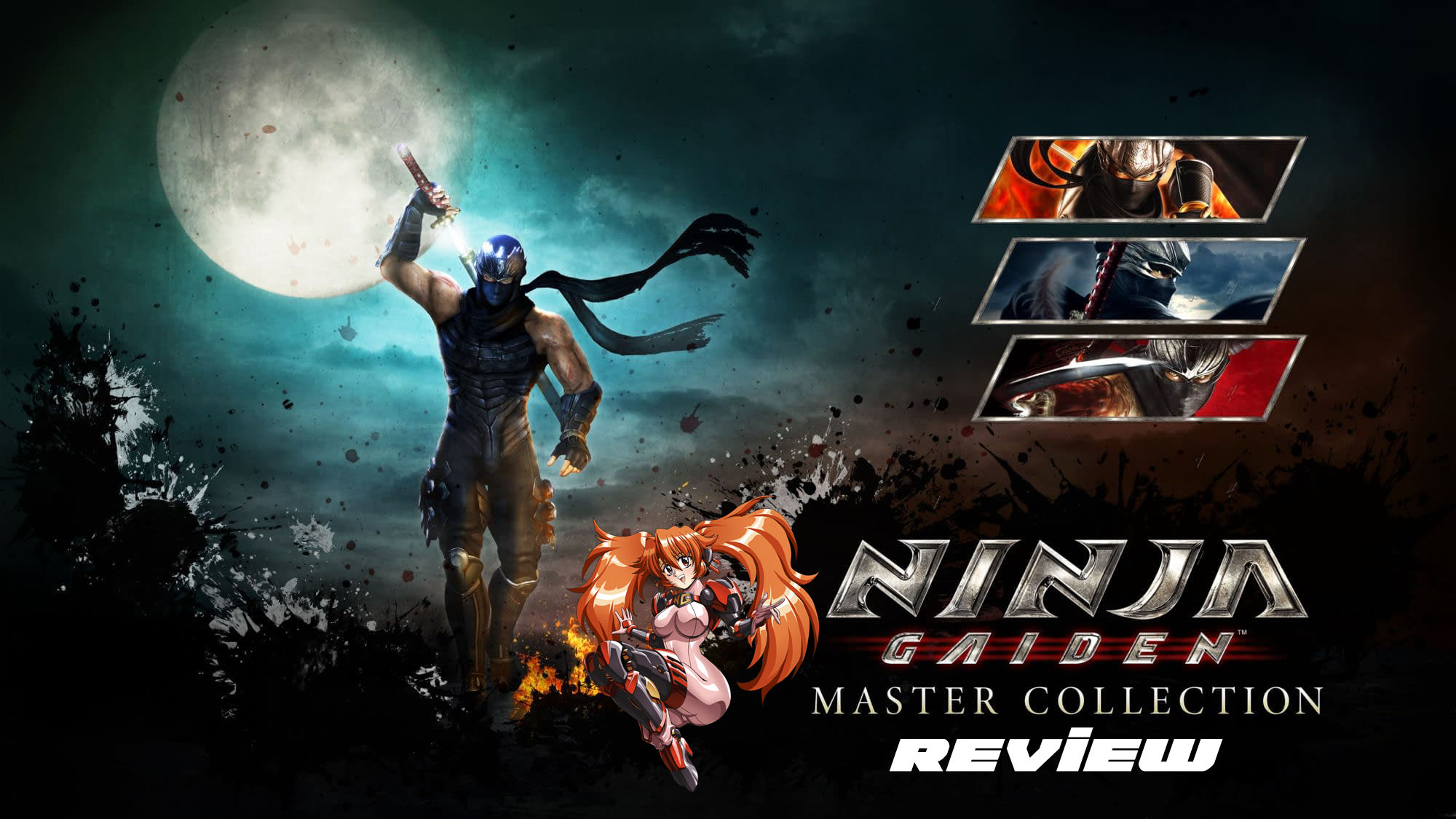
If there was one thing that the Ninja Gaiden games have always been known for; it would be their incredible difficulty and unrelenting, white-knuckle challenge. Ever since the original trilogy on the NES, these were true tests of patience, endurance, and wits. There was a reason why one of the music tracks in the original 8-bit games was titled “Unbreakable Determination”… It was because you would need it to survive.
While the original trilogy would always have old-school appeal, it wouldn’t be until the reinvention of the series in 2004 on Xbox where Ninja Gaiden would reestablish itself as one of the leading 3D action games of its generation. While PlayStation 2 gamers were making devils cry, Xbox gamers wept at Ninja Gaiden‘s challenge, that is still widely considered one of the hardest 3D action games ever made.
After an excellent sequel, an underrated DS spin-off, and then a disappointing third game; Ryu Hayabusa was hardly seen again. He showed up for his spots in the Dead or Alive games, but after the questionable experiment of Yaiba: Ninja Gaiden Z, Ryu stopped getting new games. After a long time coming, the ultimate 3D action game trilogy makes its return in Ninja Gaiden: Master Collection, but at what cost?
This is a review coupled with a supplemental video review. You can watch the video review or read the full review of the game below.
Ninja Gaiden: Master Collection
Developer: Team Ninja
Publisher: Koei Tecmo
Platforms: Windows PC, Nintendo Switch (reviewed), PlayStation 4, Xbox One
Release Date: June 10, 2021
Players: 1
Price: $59.99 USD

The games in the 3D Ninja Gaiden trilogy have had several re-releases and changes to each title over the years. The 2004 Ninja Gaiden especially has had several major changes and adjustments with each release. Some changes were great; the implementation of 3D camera control mapped to the right analogue stick, additional boss battles, and new weapons were always welcomed.
Regretfully, not all revisions of Ninja Gaiden are created equally. In 2005, Ninja Gaiden Black was released, and it was a much more cruel remix of the already sadistic classic.
Not only were many enemies rearranged, but new bosses and weapons were introduced, as well as a Ninja Gaiden the arcade game as an unlockable bonus. Between all the technical tweaks and extras, this can easily be considered the definitive way to play Ninja Gaiden.
Ninja Gaiden Sigma was the port that saw significant changes to the game; and is the version included in Master Collection. In 2007, Sigma would be one of the best games one could play on a PlayStation 3. It made several improvements from Black, like playable Rachel missions, but also took a lot of things out. Most notably, the visuals were given a major overhaul and the resolution bump to 720p.
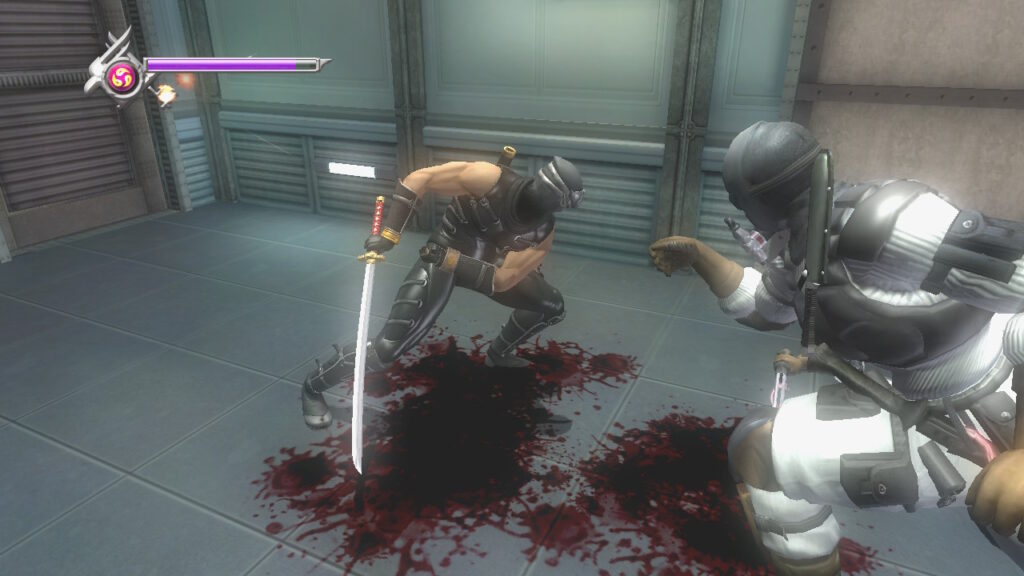
Sigma’s visuals has aged very well for a game from 2007, that was based off a game from 2004. Team Ninja’s art style has an early 2000s pre-rendered CG look to it, that makes the characters resemble detailed resin figures. It may look a bit plain at times, but everything is very clearly defined and easy to read, which is extremely important in a game with action that can get really fast and frantic.
In Ninja Gaiden: Master Collection on Nintendo Switch, Sigma is seemingly a perfect port of the PlayStation 3 version. It looks and runs almost identical; even having the same resolution of 720p. Disappointingly, nothing new was added. This could have been a wonderful opportunity to restore some of the features or harder modes from Black, or even the NES or arcade version of Ninja Gaiden.
The gameplay holds up excellently, and of all of the titles in Master Collection, Sigma offers the most unique experience of the trilogy. While the action is just as vicious, the scenario will have Ryu Hayabusa explore more open ended environments at the player’s pace, adventure game style. Finding keys, extra encounters, hidden power-ups, and weapons will be strewn about; and there won’t be any hand-holding.

Tairon is a Middle Eastern city that will have many moments where Ryu will have to explore to make progress. There are many optional activities to partake in, and it is because of this free-form play-style that Sigma offers the most variety in the trilogy.
Sometimes Ryu will be exploring ruins where he will fight mummies, other times he will be in some church and will brawl with demons. Ryu will get ambushed by soldiers while on an airship, or in alleys where they will be on motorcycles. Other ninjas will suddenly show up, trying to make quick work of the hero, always making the atmosphere uneasy as exploration unfolds.
Ninja Gaiden Sigma is still one of the best 3D action games ever made. The Switch version in Master Collection is regrettably basic, but is a solid port of the PlayStation 3 game. The frame rate is very stable, and the resolution in portable mode is maxed out at 720p. Disappointingly, this is the same resolution for TV mode, and the image quality can look rough during the pre-rendered CGI scenes.
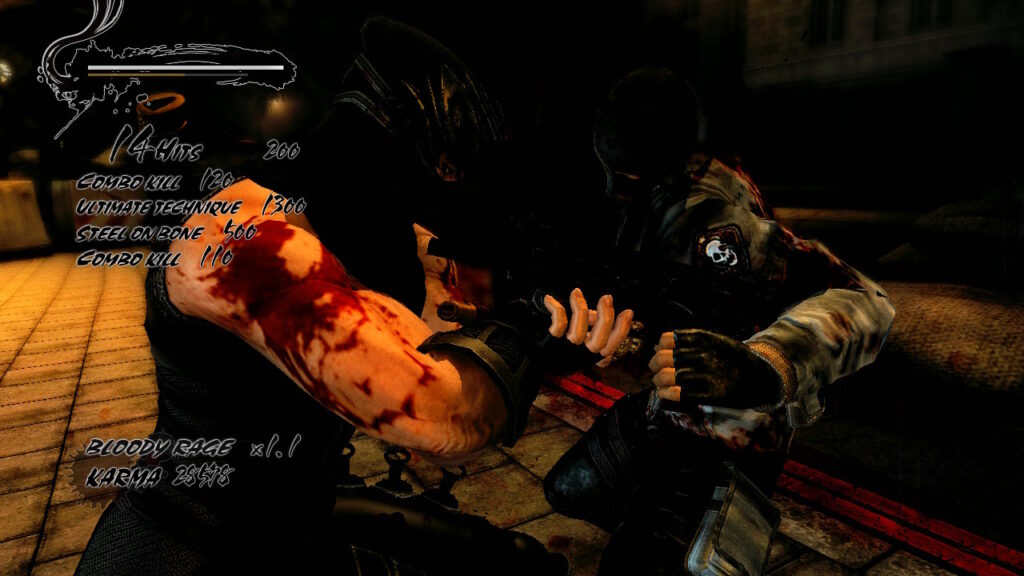
Ninja Gaiden 2 and its Sigma equivalent is where the differences in versions become so vast, that they become two different experiences. The vanilla version of Ninja Gaiden 2 is still an Xbox 360 exclusive, and was such a demanding game that it required backwards compatibility of Xbox One consoles to run it perfectly. Even with Sigma 2, the vanilla release has its own qualities that make it unique.
Compounded by the inhuman speed of the action, psychotically aggressive enemies and occasionally cheap tactics they employ, vanilla Ninja Gaiden 2 is one of, if not, the hardest 3D action game ever made. For some, Sigma 2‘s lighter difficulty may be a blessing, since this is still going to pose a grueling challenge.
Sigma 2 has much fewer enemies on screen than the original release, and to balance things out, the fewer threats were given more health. This sometimes makes battles feel a bit more drawn out, and can wear down the spirit to continue when even basic guys can take a long beating after getting their legs cut off from beneath them.
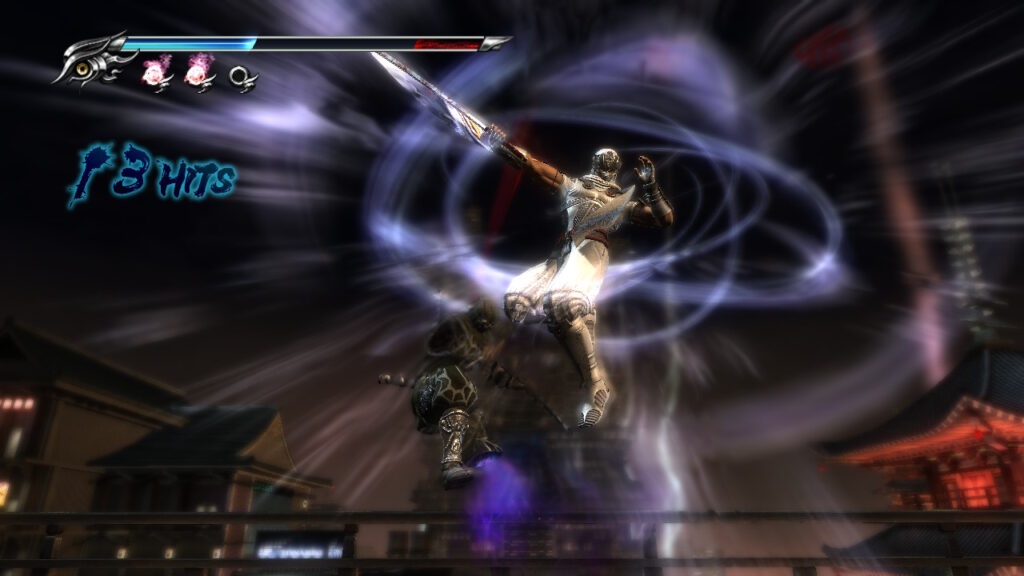
Master Collection missed the opportunity to have the vanilla scenario included. It is a totally different sensation to kill much more threatening enemies at any given moment. The stakes felt higher due to how fast both the player and bad guys can be killed.
Sigma 2 tries to make up for this by doubling down on a lot of extra content; Rachel, Ayane, and Momiji get playable chapters and come with their own unique mechanics. New boss battles and several existing bosses get rearranged within the core game, which is a welcome surprise for fans who can enjoy both versions.
Unfortunately, as much as Sigma 2 added, a lot got removed. Fans of the adventure game elements from the previous game will be disappointed to find out that Sigma 2 cuts out the key items and streamlines the gameplay to have much fewer barriers. The action is almost a total straight shot from start to finish, and there is never any question of what Ryu must do to continue.
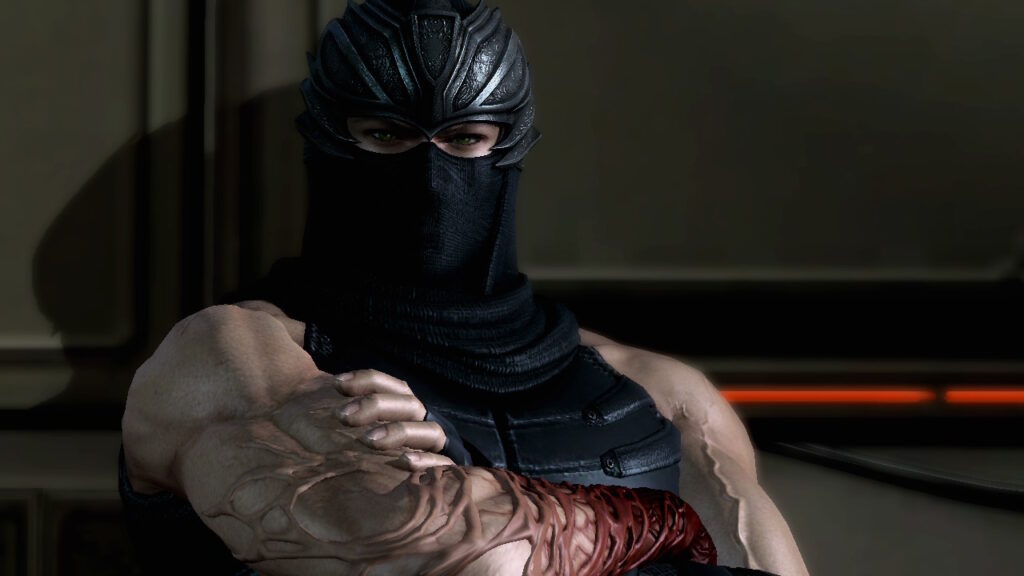
Image quality in the Switch version of Sigma 2 is 720p, as it was on PlayStation 3. Overall, all three games in Master Collection on Switch never surpass what was rendered on the seventh gen consoles. More disappointingly, the frame rate is also not very stable, and drops will be very apparent in the very first level. Even with fewer enemies than the vanilla version, Sigma 2 still struggles to maintain 60 fps on Switch.
While Sigma 2 may have some flaws that make it harder to recommend over its vanilla counterpart, it is still one of the better 3D action games available from its generation. It’s lengthy; dense with spectacle and jam packed with content and features that will keep gamers dismembering fiends by the thousands.
It may not be a perfect port on Switch, but it is certainly the best way to play Sigma 2 portably. The controls feel as tight as ever, and the art style allows the visuals to hold up. This is still one of the fastest action games around, and anyone who really wants to stress their Switch’s durability will find that Sigma 2 will push its integrity to its utter limit.
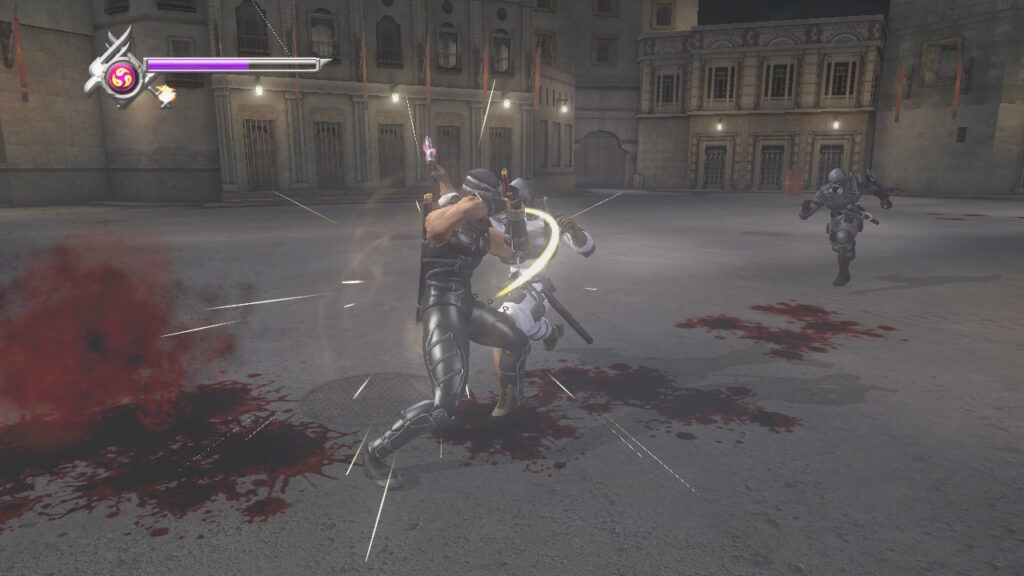
The most infamous cuts made to Sigma 2 is the gore from the dismemberment. Cutting up boys in this game was a crucial gameplay element for several reasons. Not only did an enemy’s tactics change from losing an arm or a leg, but the visceral feel of the violence added so much to the flavor of Ninja Gaiden 2. It was sumptuous and gritty euphoria that made the combat have that satisfying crunch.
Losing the splatter for smoke was a huge mistake for Sigma 2. The developers seemingly acknowledge this error with Ninja Gaiden Sigma 2 Plus on PS Vita, by restoring the juicy red stuff. Frustratingly, Master Collection does not restore the gore [1, 2], and everyone must settle for the censored purple mist for all versions of this compilation.
Another bit of flair from Ninja Gaiden 2 that did not make it over to Sigma 2 was the trail of corpses and blood that Ryu leaves in his wake. It used to be that all dead bodies were permanent and did not disappear; something that was probably demanding on memory back in the day.
Having all the death stay really added to the atmosphere, and would allow the player to reflect upon all the mayhem they caused. Sigma 2 ends up feeling more sterile as a result.
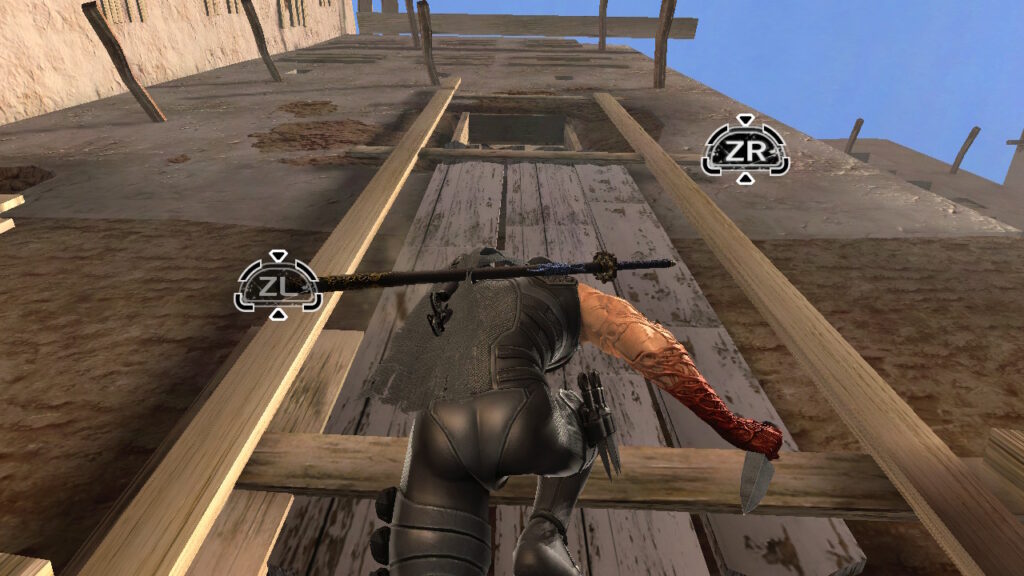
Ninja Gaiden 3: Razor’s Edge is the only time a re-release was undeniably improved upon in every way from its vanilla version. Team Ninja’s priorities were trying to make the third game as “immersive” as possible. For the seventh gen, this translated to stripping out features that were considered “too video gamey,” and when Razor’s Edge came around, gamers saw a lot of those features restored.
Basic elements like boss life bars were brought back, and a much more reasonable upgrade system for Ryu’s abilities was introduced. The usual suspects of Ninja Gaiden re-release upgrades also made their way into Razor’s Edge, like the playable bonus characters, extra weapons, and collectibles have been restored.
The removal of collectibles and hidden treasure chests hurt the experience most. While the games have become more and more linear with every installment, Razor’s Edge has no hidden areas or secrets to find. Most all collectibles are always in plain sight as a result of the game’s foundation on becoming more of a cinematic action experience, that focuses on telling a story more than any prior Ninja Gaiden.
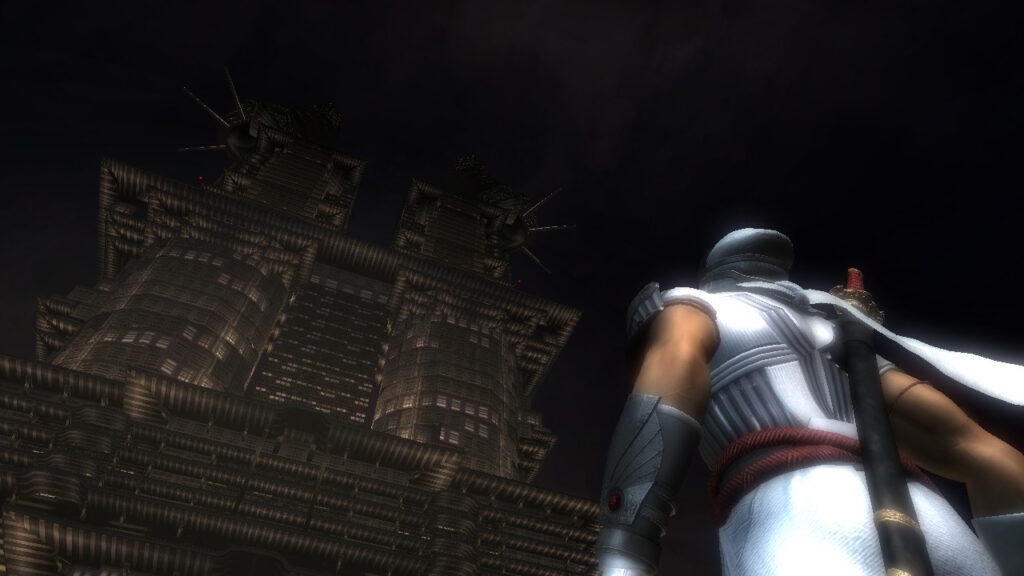
Razor’s Edge‘s image quality in Master Collection is very rough. The 720p makes the complex textures and effects look extremely busy and uncomfortably jaggy. The gamma levels are also exceedingly dark, which makes combat unfairly difficult when Ryu gets ganged up by the same few military guys found in every level.
The gameplay is wasted due to the unstable frame rate; a shame since the move-set and range of options that Ryu has at his disposal is just as vast as it ever was. This was already the weakest of the trilogy, and it appears to have gotten the least amount of attention. There likely is not much the developers could have done, since the foundation for Razor’s Edge was utterly frail from the start.
The stories for the trilogy was never the selling point, and for some reason a mandate was given to make it a priority for the third entry. The first two Ninja Gaiden games kept their plots very simple, and wouldn’t interfere too much.
Both Sigma 1 and 2 have the same general story involving Hayabusa’s village getting attacked, him setting out on a globe trotting adventure seeking vengeance; and acquiring some mythical weapons along the way.
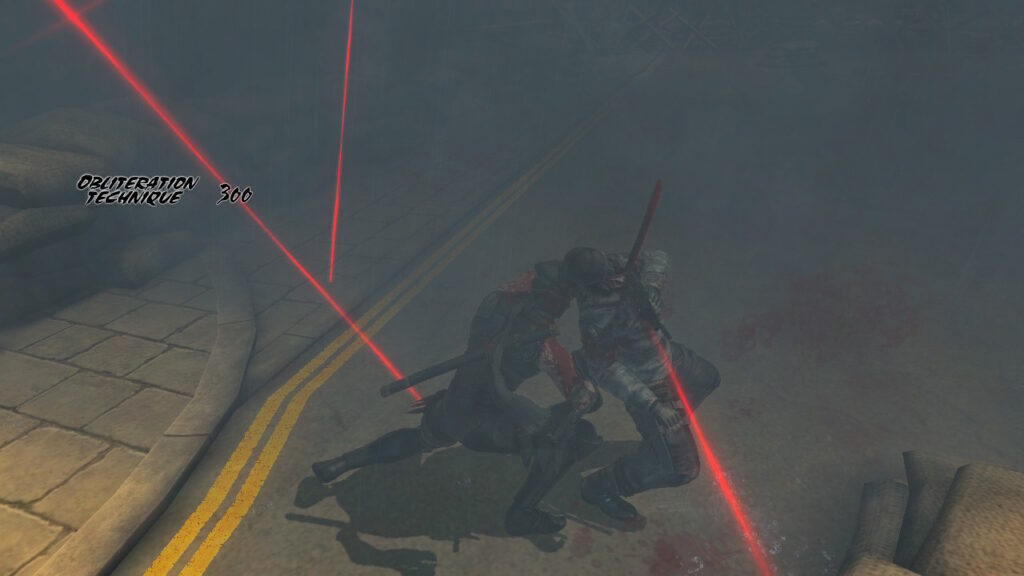
The story Ninja Gaiden 3: Razor’s Edge isn’t any more complex, but the effort put into its production is more pronounced than ever. Tons of characters are introduced, none of which are compelling or have any bearing on the action.
Nobody will ever remember the names of the government agent characters, or the motivations of the Black Spider Clan or the Regent. The only thing anyone will care about is how to stay alive when being attacked by a cyborg T-Rex, and that Ryu has gotta cut up the bad guys before they end the world before the week ends. It borders on experimental; how the story is such utter schlock, but the production values are so lavish and detailed.
Razor’s Edge makes all the typical sins that were common from games of its generation: the forced walking sequences, quick-time-events, and lots of scripted action scenes where the hero has to run away. This might not have been so bad, if the enemy variety wasn’t so creatively bankrupt, and that the game didn’t throw waves upon waves of fodder at Ryu until he meets his quota.
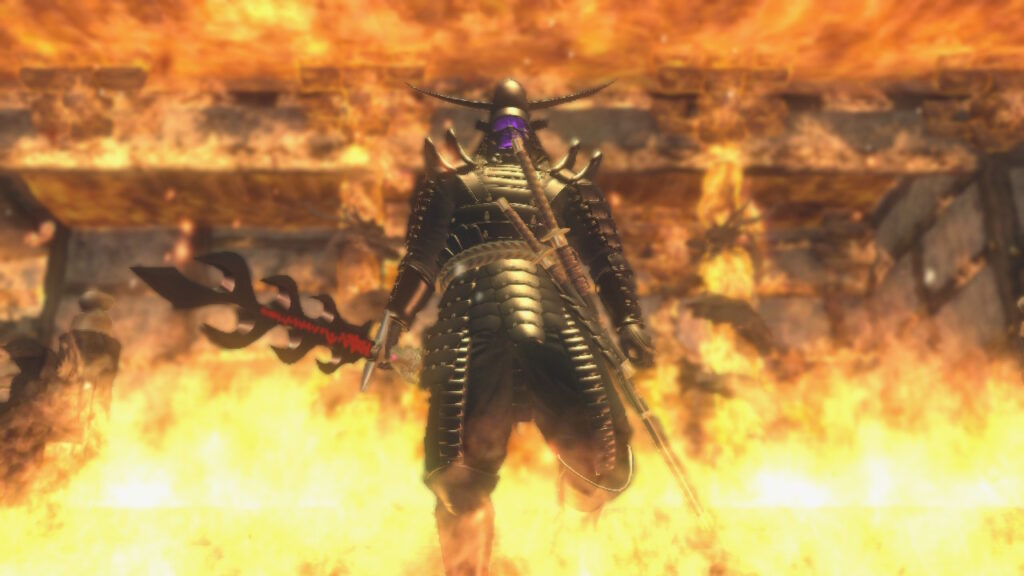
Going into an area will wash over an overwhelming feeling of dread, because you just know the cycle is about to begin again. Prior games would space out encounters with varied scenarios of exploration and hidden collectibles.
The third games becomes grueling gauntlets; punctuated with brief moments where you can save and manually drive Ryu to the next room where he has to fight more army guys or participate in an action scene.
Unfortunately, Ninja Gaiden: Master Collection is a very lazy port of a couple of the better 3D action games. While Razor’s Edge is a dud, it’s also packed with features and content for anyone who is willing to endure its tedious pacing and obnoxious game design. The real stars in this collection are both Sigma games, which clearly got more care put into making them playable on Switch.
Other versions of Master Collection will be able to play all three titles in 4K, and will likely have a much tighter lock on the frame rate. Not every feature is here: the online multiplayer modes all have been cut, and there could have been further attempts at adding some other features like a turbo mode, photo mode, or even restore some of the bonus unlockable retro games.
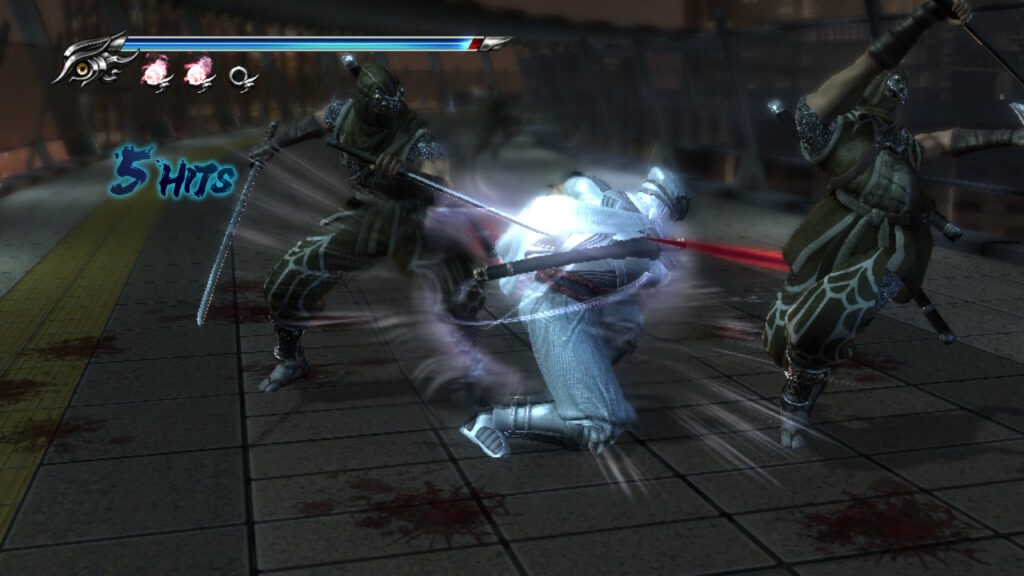
Koei Tecmo may call this a “Master Collection“, but a true ninja knows that this package is incomplete. Sadly, Ninja Gaiden: Dragon Sword could not be included, which is a real shame because it has more business being in this compilation than Razor’s Edge.
The biggest mistake was not having the vanilla version of Ninja Gaiden 2 included. Today, the only way to play it is on Xbox 360, or via backwards compatibility on the Xbox One or Xbox Series X|S consoles. On backward compatibility, Ninja Gaiden 2 looks and runs like a remaster, and it is worth experiencing due to how different it is to Sigma 2.
On Switch, Ninja Gaiden: Master Collection can only be recommended for playing the first two Sigma games. Even then, the port quality is a bit on the rough side for Sigma 2. The first game is the undisputed champion of the bunch, and will test the mettle of any action game fan. As far as compilations go, Ninja Gaiden: Master Collection is very bare-bones and reeks of laziness.
Ninja Gaiden: Master Collection was reviewed on Nintendo Switch using a review code provided by Koei Tecmo America. You can find additional information about Niche Gamer’s review/ethics policy here.